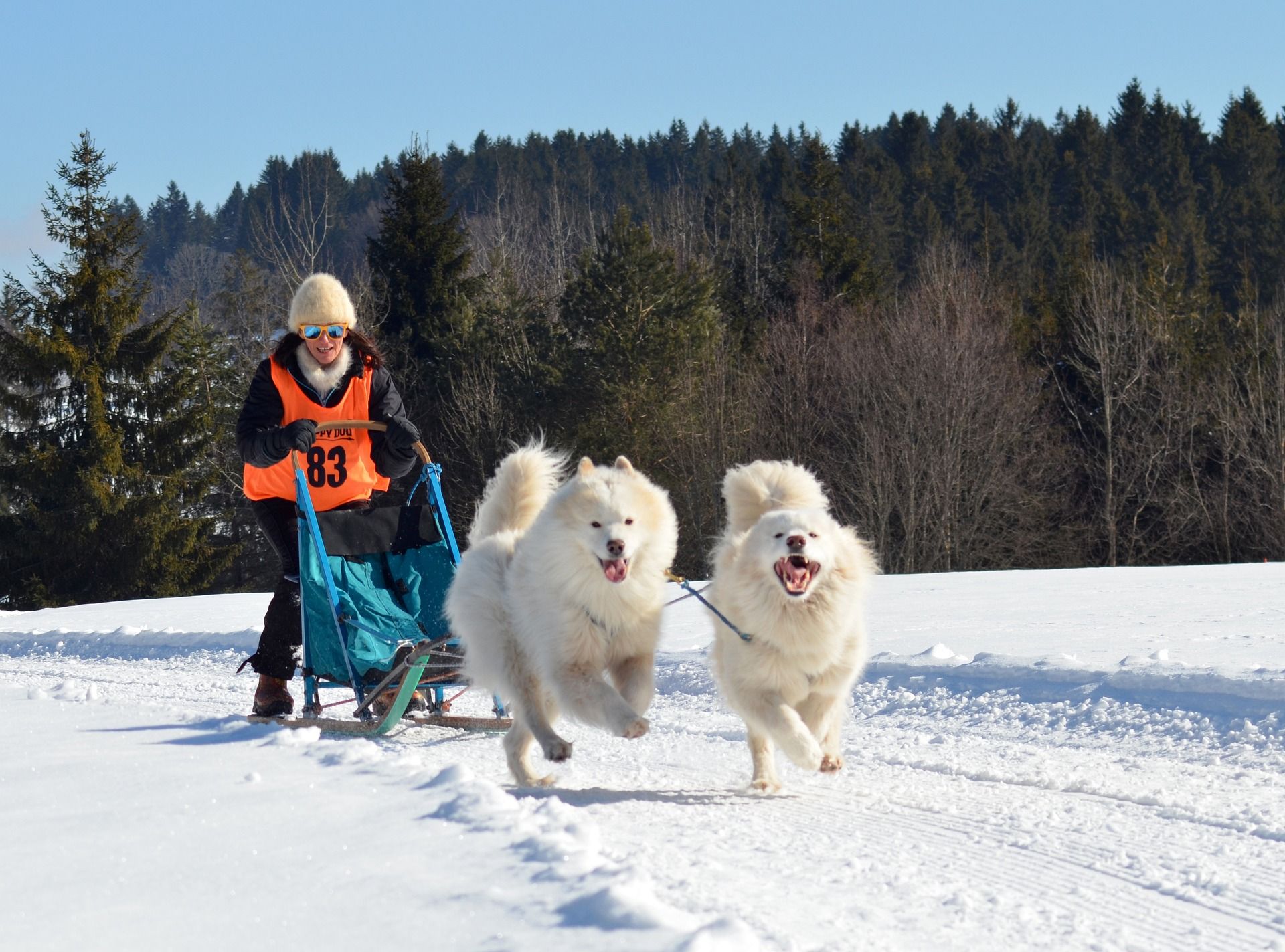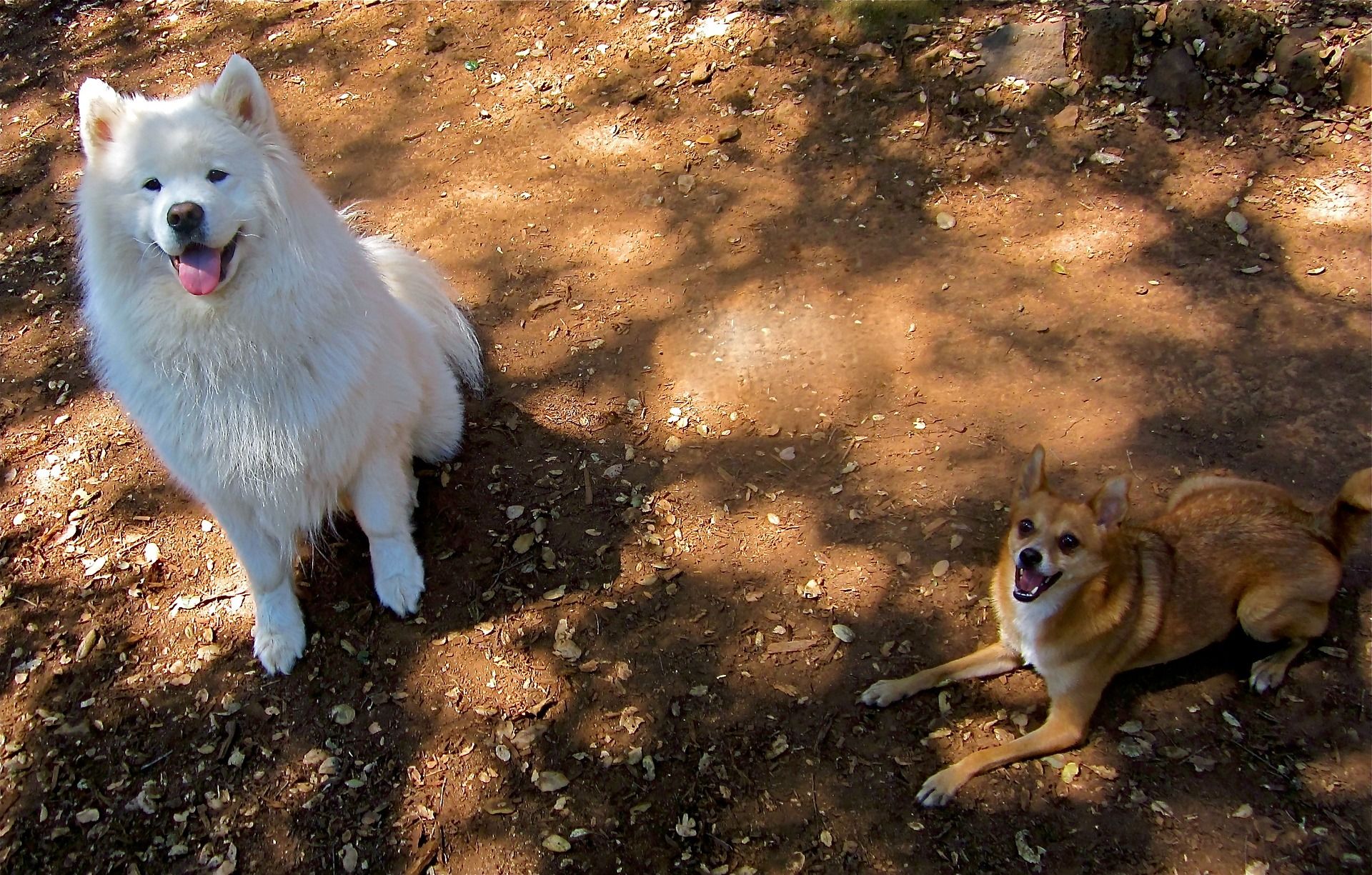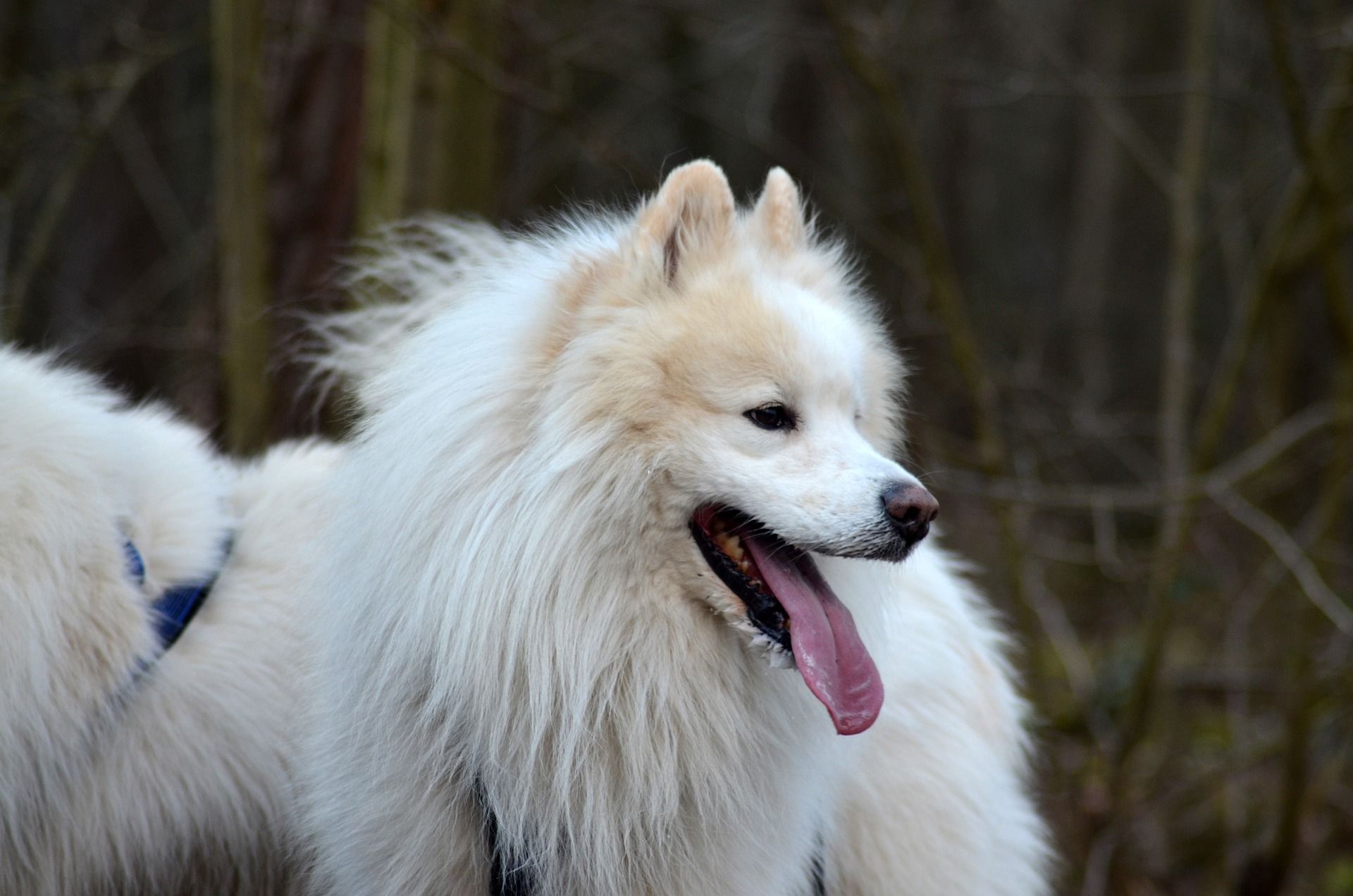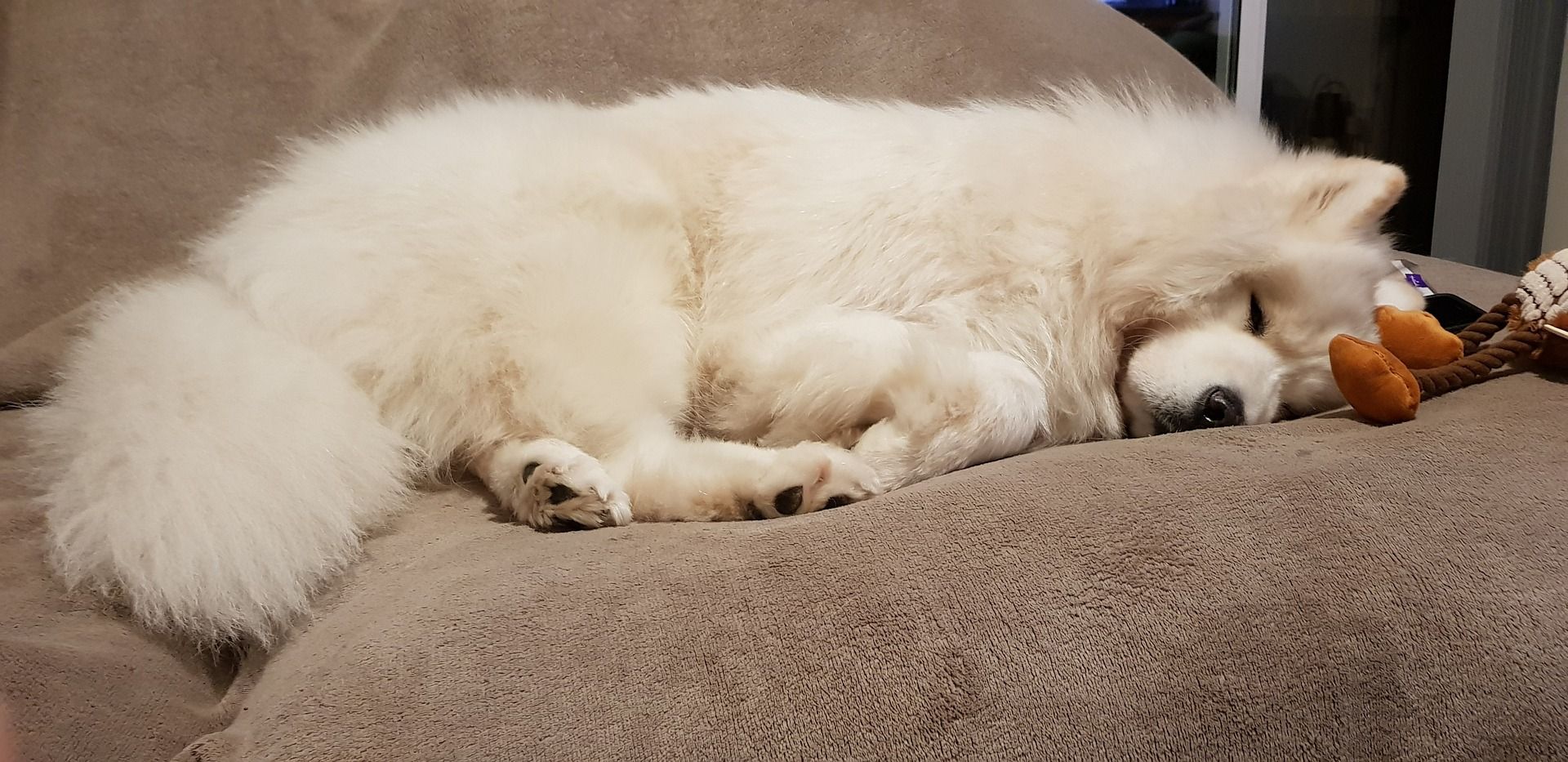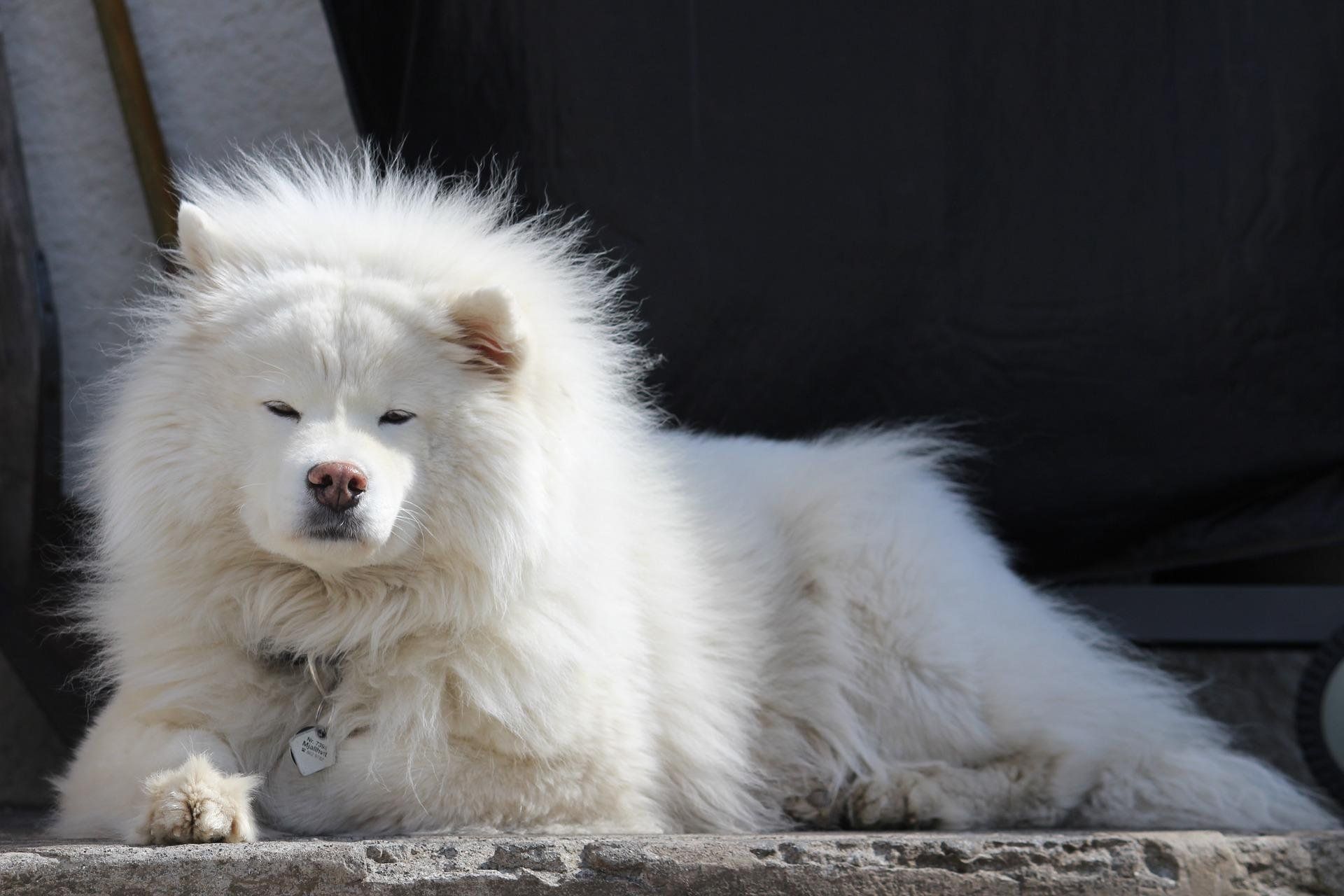Samoyeds are known for their intelligence and versatility, but considering that independence and playfulness typically makes training hard, are they trainable?
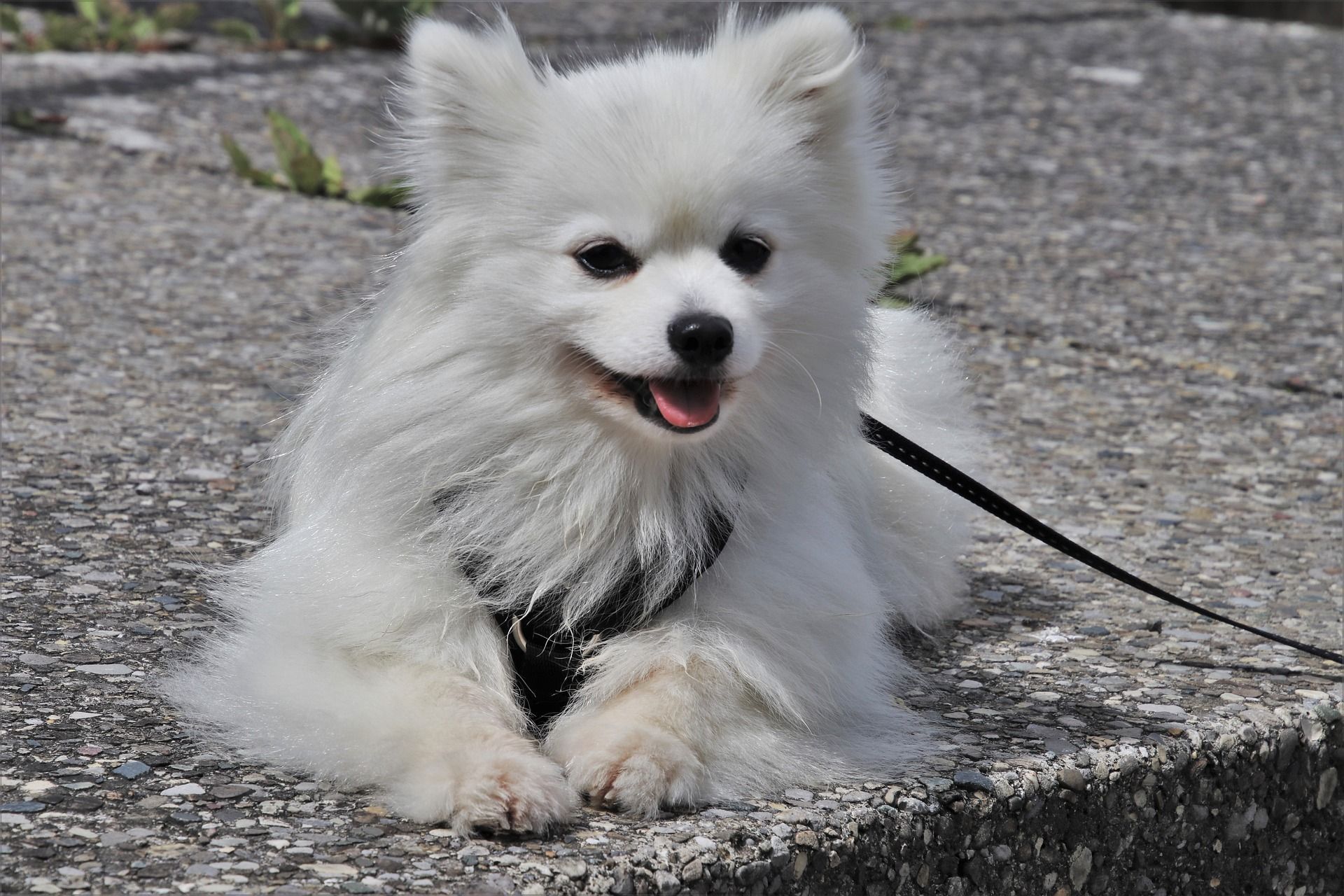
Samoyeds can present some challenges when it comes to training, but by considering factors such as intelligence, independence and stubborn streaks and tailoring your training approach to suit the individual characteristics of your Samoyed, you can establish a positive and effective training relationship.
Table of Contents
-
-
Factors influencing trainability of Samoyeds
- Intelligence
- Independence
- Playfulness
- Social Nature
- Positive Reinforcement
- Early Socialization
- Energy Level
- Consistency
- Patience
- Positive Environment
- Interactive Training
- Varied Environments
- Social Interaction with Other Dogs
- Understanding Breed Characteristics
- Age of the Dog
- Individual Personality
- Handling Sensitivity
- Breed-Specific Behaviors
- Preventing Boredom
- Family Dynamics
-
Are samoyeds easy to train?
Samoyeds are known for their intelligence and versatility, but they can present some challenges when it comes to training.
Whether or not a Samoyed is considered easy to train depends on various factors, including the individual dog, the owner’s training approach, and the consistency of training efforts.
That said, Samoyeds are trainable dogs with a strong desire to please, but they may have moments of independence and playfulness that can make training challenging.
Factors influencing trainability of Samoyeds
Training Samoyeds can be influenced by various factors, and understanding these factors is crucial for successful and effective training. Samoyeds are known for their intelligence, social nature, and playfulness, but they also have some unique traits that can impact the training process.
Here are key factors influencing the training of Samoyeds
Intelligence
Samoyeds are generally intelligent dogs. Their 8*ability to learn commands and tasks is high**, making them capable of picking up new skills. This intelligence can be an asset during training sessions.
Independence
Samoyeds have an independent streak. This independence is a trait that was developed as part of their working heritage, where they needed to make decisions while herding reindeer in challenging Arctic conditions. It can sometimes result in a dog that is less eager to comply with every command.
Playfulness
Samoyeds are known for their playful and exuberant nature. While this playfulness makes them delightful companions, it can also be a challenge during training as they may become easily distracted or want to turn training sessions into playtime.
Social Nature
Samoyeds are social dogs that enjoy the company of their human family. Their desire for social interaction can work both ways in training – they may be motivated to please their owners, but they may also seek attention and play rather than focusing on training tasks.
Positive Reinforcement
Samoyeds respond well to positive reinforcement. Reward-based training methods, involving treats, praise, and play, are effective in motivating them to follow commands and exhibit desired behaviors. Harsh training methods or punishment are generally not recommended as they can lead to resistance.
Early Socialization
As with any breed, early socialization is crucial for Samoyeds. Exposing them to various people, environments, and experiences during their early months helps prevent behavioral issues and contributes to a well-rounded, adaptable adult dog.
Energy Level
Samoyeds are energetic dogs that require regular exercise to expend their energy. Training sessions are more effective when the dog is adequately exercised, as a tired dog is more likely to focus and learn.
Consistency
Consistency in commands, rules, and expectations is essential. Samoyeds respond well to clear and consistent communication, and deviation from established routines may lead to confusion.
Patience
Patience is key when training Samoyeds. Their playful nature and occasional stubbornness may require extra time for them to fully understand and comply with commands. Rushed or impatient training can result in frustration for both the owner and the dog.
Positive Environment
Creating a positive training environment is important. Samoyeds thrive on positivity, and a cheerful and encouraging atmosphere during training sessions contributes to their willingness to participate.
Interactive Training
Samoyeds enjoy interactive training sessions that involve play and engagement. Incorporating games, toys, and varied activities into training keeps them mentally stimulated and interested.
Varied Environments
Training in different environments helps generalize commands and behaviors. Samoyeds benefit from exposure to various situations to reinforce their training in real-world scenarios.
Social Interaction with Other Dogs
Positive interactions with other dogs contribute to their socialization. Well-managed playdates and social outings can enhance their overall behavior and responsiveness to training.
Understanding Breed Characteristics
Familiarizing yourself with the specific characteristics of the Samoyed breed is crucial. Knowing their herding background, independent nature, and social tendencies helps tailor training methods to suit their unique traits.
Age of the Dog
Training approaches may vary based on the age of the dog. Puppy training focuses on basic commands and socialization, while training an adult Samoyed may involve addressing specific behaviors or reinforcing existing commands.
Individual Personality
Each Samoyed has an individual personality. Some may be more eager to please, while others may display more independence. Tailoring training methods to suit the individual dog’s personality enhances effectiveness.
Handling Sensitivity
Some Samoyeds can be sensitive to handling, particularly with their paws, ears, or tail. Gradual desensitization during grooming and handling exercises helps prevent discomfort during these activities.
Breed-Specific Behaviors
Understanding and addressing breed-specific behaviors, such as digging or barking, is important. Training should focus on redirecting these natural behaviors into acceptable alternatives.
Preventing Boredom
Samoyeds can become bored easily, leading to undesirable behaviors. Providing mental stimulation through puzzle toys, interactive games, and varied activities helps prevent boredom-related issues.
Family Dynamics
Consistency in training commands and rules among all family members is essential. Samoyeds may become confused if different family members use different cues or have inconsistent expectations.
By considering these factors and tailoring your training approach to suit the individual characteristics of your Samoyed, you can establish a positive and effective training relationship.
Are samoyeds hard to train for a first-time owners?
Again, whether Samoyeds are considered hard to train depends on various factors highlighted above.
While Samoyeds may present some challenges for first-time owners, they can also be wonderful companions with the right training approach.
Anticipated training challenges include:
- Independence - less eager to comply
- Playfulness - easily distracted
- Stubborness - resist uninteresting/repetitive training
- Attention spans - short, especially when young
- Grooming sensitivity - sensitive to grooming and handling. particularly regarding their coat
Anticipated training joys include:
- Intelligence - ability to learn commands and tasks is high
- Social nature - typically enjoy human interaction
- Playful disposition - harnessed with interactive training
- Adaptability - versatile in various environments
Samoyed Training for First-Time Owners
Consistency, positive reinforcement, and early socialization are key elements in building a strong bond and positive training relationship with a Samoyed. Training a Samoyed, especially for first-time owners, requires patience, consistency, and a positive approach.
Here are some training tips to help you navigate the process successfully:
Basic Training Principles
- Start early: Begin training and socialization as early as possible, ideally during puppyhood.
- Positive reinforcement: Use positive reinforcement techniques such as treats, praise, and play to reward good behavior.
- Consistency: Be consistent with commands, rules, and expectations. Samoyeds thrive on clear communication.
- Short sessions: Keep training sessions short and engaging, especially for puppies. Gradually increase the duration as their attention span grows.
- Socialization: Expose your Samoyed to various people, places, and situations from an early age to ensure well-rounded behavior.
- Patience: Patience is key. Samoyeds may take time to understand and comply with commands. Avoid frustration and maintain a positive attitude.
- Grooming introduction: Introduce grooming routines early and make them positive experiences. Brushing and handling should be part of regular positive interactions.
- Exercise: Ensure regular exercise to expend their energy. A tired Samoyed is more likely to focus during training.
- Variety in training: Keep training varied and interesting. Incorporate different activities to stimulate their minds.
- Professional training help: Consider seeking professional training help, especially if you encounter challenges. A trainer can provide guidance tailored to your Samoyed’s needs.
Basic Commands
- Sit command: Use treats to lure your Samoyed into a sitting position. Reward and praise when they sit.
- Stay command: Gradually increase the duration your Samoyed stays in one place. Reward and praise for a successful stay.
- Lie down command: Use treats to guide your Samoyed into a lying down position. Reward and praise for compliance.
- Come command: Encourage your Samoyed to come to you using treats and praise. Make it a positive and rewarding experience.
- Leave it command: Teach your Samoyed to leave items on command. Reward for compliance and replace the item with an acceptable toy.
Behavior Training
- No jumping: Discourage jumping by turning away and ignoring your Samoyed. Reward and praise when they keep all four paws on the ground.
- No biting: Redirect biting behavior to appropriate chew toys. Reward and praise for chewing on the correct items.
- Crate training: Introduce the crate as a positive and comfortable space. Gradually increase time spent in the crate, rewarding calm behavior.
- Potty training: Establish a consistent schedule for bathroom breaks. Reward and praise for successful outdoor potty breaks.
- Quiet command: Teach a “quiet” command by rewarding calm behavior and ignoring excessive barking.
Socialization and Interaction
- Doggy playdates: Arrange playdates with other well-behaved dogs to encourage positive socialization.
- Positive exposure: Expose your Samoyed to various sounds, sights, and people to build confidence.
- Meeting strangers: Teach your Samoyed to greet strangers politely. Reward calm behavior during introductions.
- Handling exercises: Get your Samoyed accustomed to being touched and handled, including paws, ears, and mouth.
- Positive associations: Associate positive experiences with new environments and situations to prevent fearfulness.
Advanced Training
- Agility training: Introduce agility equipment gradually, rewarding for navigating obstacles.
- Advanced obedience: Progress to advanced obedience commands and tricks, using positive reinforcement.
- Off-leash training: Train for reliable off-leash behavior in safe, enclosed areas. Reward for staying close.
- Emergency recall: Train a strong recall for emergency situations using high-value treats.
- Stay calm in public: Teach your Samoyed to stay calm in public settings, rewarding calm behavior.
Preventing Undesirable Behaviors
- Deterrence sprays: Use deterrent sprays to discourage chewing on furniture or inappropriate items.
- Redirecting attention: Redirect attention away from undesirable behaviors to more appropriate activities.
- Avoid negative reinforcement: Avoid using negative reinforcement, as it can lead to fear or anxiety.
- Consistent corrections: Be consistent with corrections for undesirable behaviors.
- Positive body language: Use positive body language to convey a calm and confident demeanor.
Health and Well-Being
- Regular vet visits: Schedule regular vet visits for health check-ups and vaccinations.
- Teeth cleaning: Get your Samoyed used to teeth cleaning early, using dog-friendly toothpaste.
- Ear cleaning: Regularly clean your Samoyed’s ears to prevent infections.
Are Samoyeds easy to potty train?
Potty training a Samoyed can be a bit challenging, especially considering their independent nature.
However, with consistency, positive reinforcement, and a well-established routine, Samoyeds can be successfully potty trained. It’s important to start early, be patient, and provide positive reinforcement for appropriate bathroom behavior.
Establishing a consistent schedule for outdoor bathroom breaks and rewarding your Samoyed for using the designated potty area will contribute to successful potty training.
